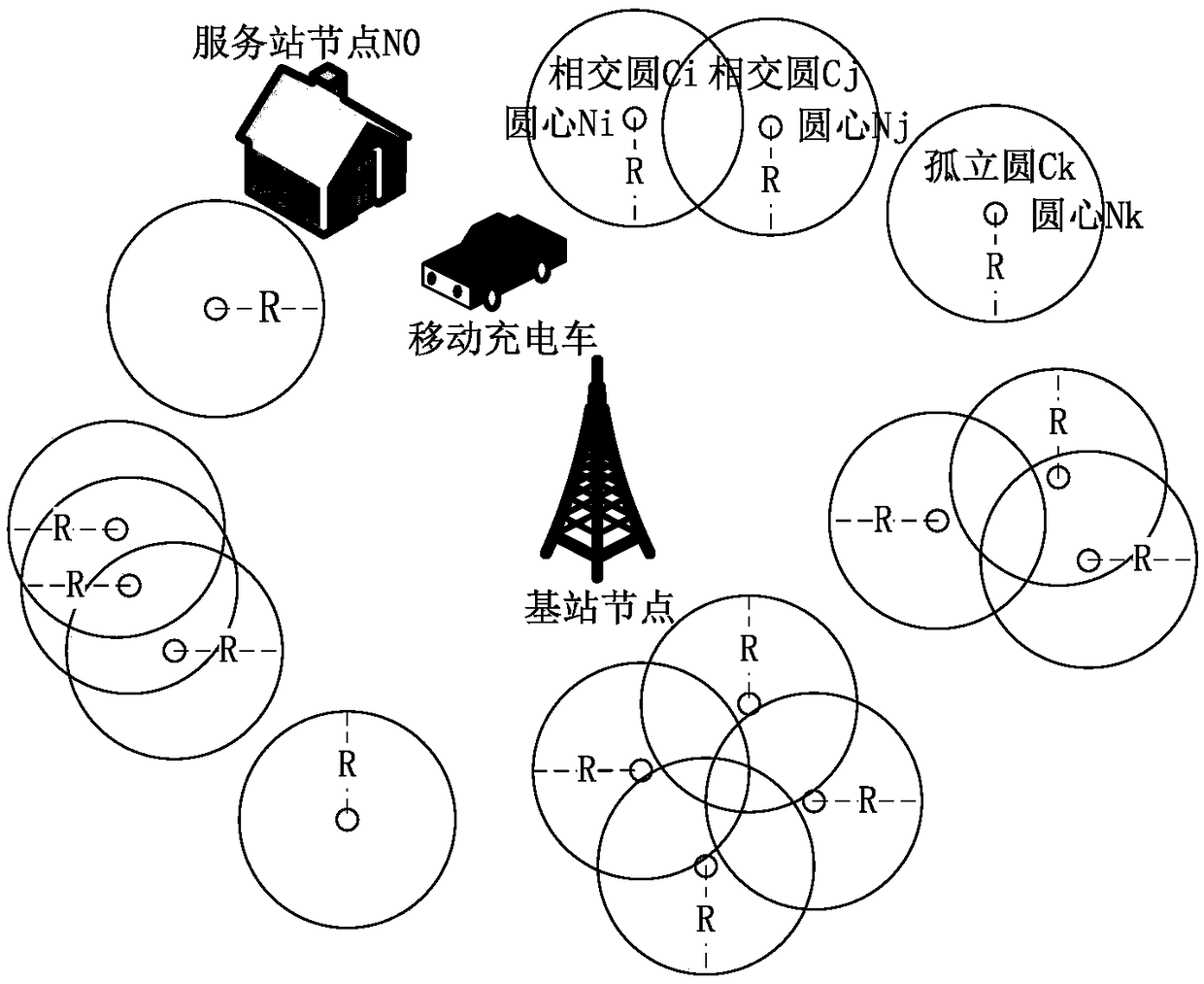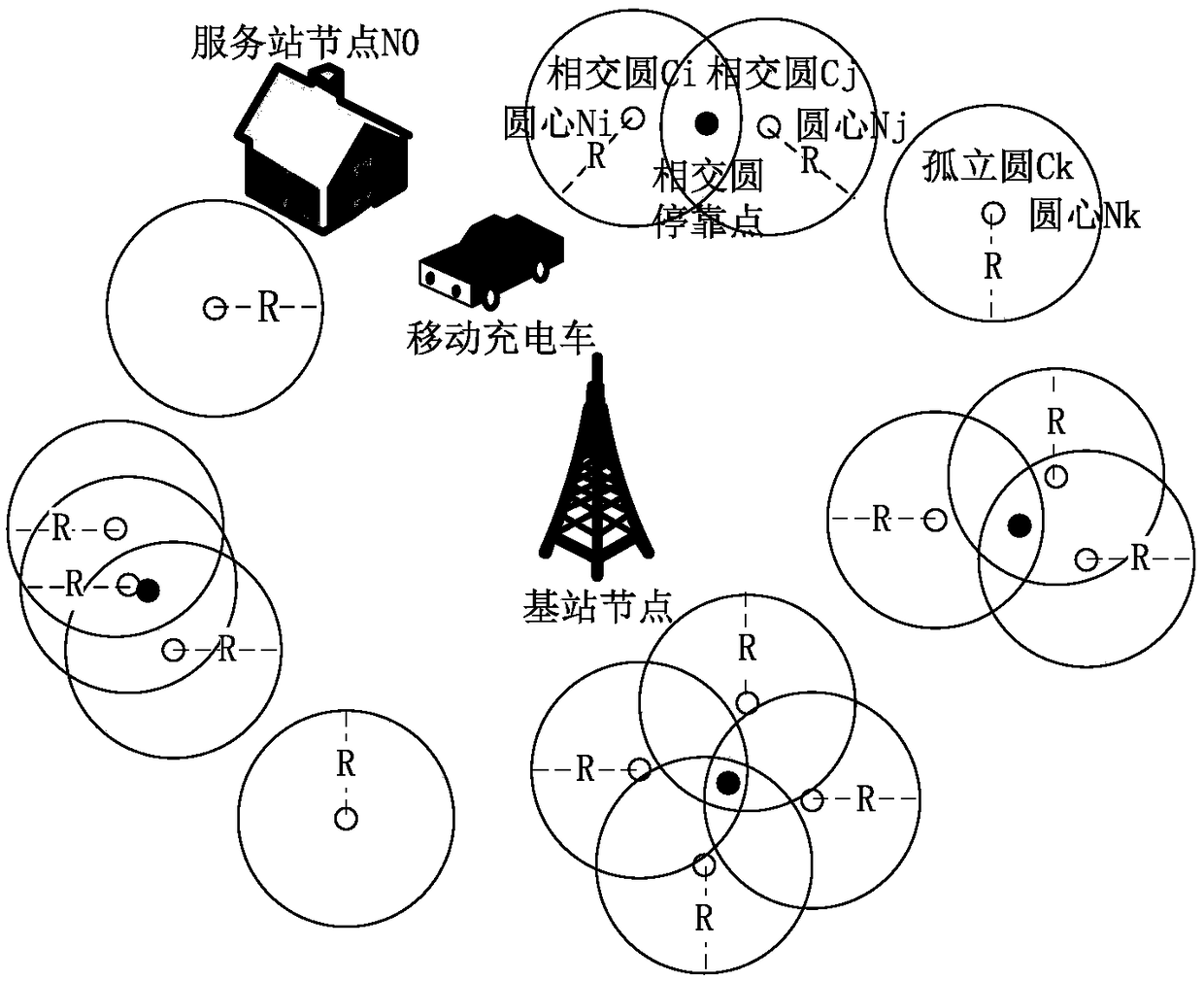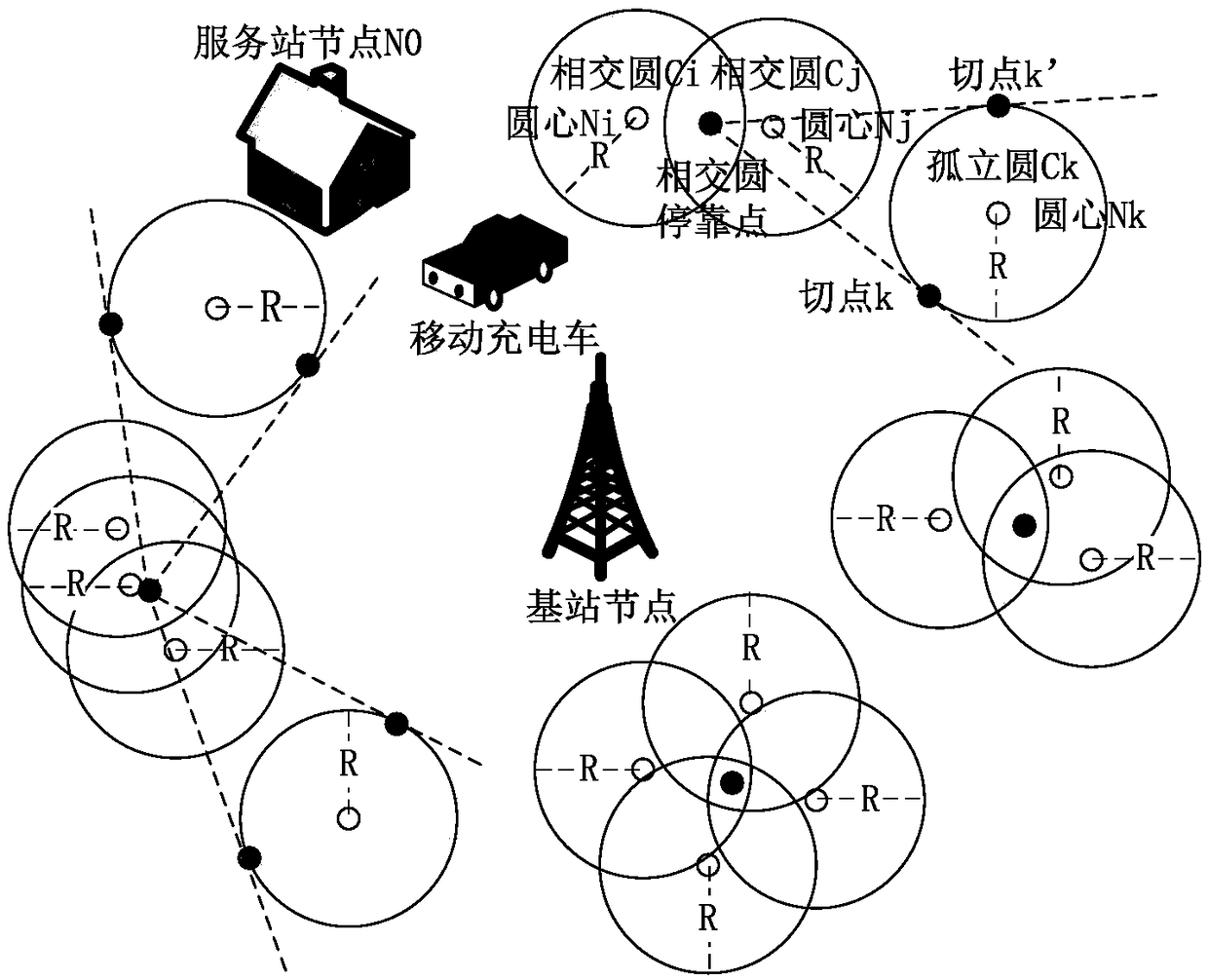Mobile charging vehicle path planning algorithm based on one-to-many charging technology
A mobile charging and path planning technology, applied in advanced technology, sustainable communication technology, computing, etc., can solve the problems of uncontrollable instability, high manpower and material cost, and inability to compensate node energy, etc., so as to reduce the charging path length, reduce charging cost, and save charging time
- Summary
- Abstract
- Description
- Claims
- Application Information
AI Technical Summary
Problems solved by technology
Method used
Image
Examples
Embodiment Construction
[0028] In order to enable those skilled in the art to better understand the technical solutions in the application, the technical solutions in the embodiments of the application are clearly and completely described below. Obviously, the described embodiments are only part of the embodiments of the application, and Not all examples. Based on the embodiments in this application, all other embodiments obtained by persons of ordinary skill in the art without creative efforts shall fall within the scope of protection of this application.
[0029] A mobile charging vehicle path planning algorithm based on single-to-many charging technology, the specific steps are as follows:
[0030] Step 1: Given a sensor node set N, each node N in the sensor node set N i There exists a corresponding N i C is the center of the circle and the charging range R of the mobile charging car is the radius C i , these circles form a set C. The mobile charging vehicle starts from the service station node...
PUM
 Login to View More
Login to View More Abstract
Description
Claims
Application Information
 Login to View More
Login to View More - R&D
- Intellectual Property
- Life Sciences
- Materials
- Tech Scout
- Unparalleled Data Quality
- Higher Quality Content
- 60% Fewer Hallucinations
Browse by: Latest US Patents, China's latest patents, Technical Efficacy Thesaurus, Application Domain, Technology Topic, Popular Technical Reports.
© 2025 PatSnap. All rights reserved.Legal|Privacy policy|Modern Slavery Act Transparency Statement|Sitemap|About US| Contact US: help@patsnap.com



